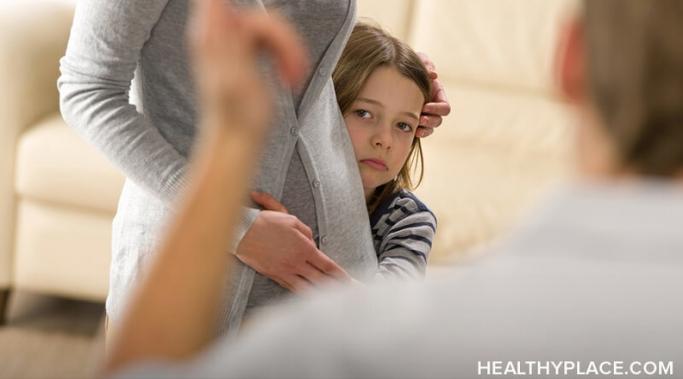Separation Anxiety Disorder

Full description of Separation Anxiety Disorder. Definition, signs, symptoms, and causes of Separation Anxiety Disorder.
Description of Separation Anxiety Disorder
It's completely normal for children, especially in very young children, to experience some degree of separation anxiety. In contrast, separation anxiety disorder is excessive worry or anxiety that goes beyond that expected for the child's developmental level. Separation anxiety is considered a disorder if it lasts at least a month and causes significant distress or impairment in functioning. The duration of the disorder reflects its severity.
Separation anxiety occurs at a time when infants start to become aware that their parents are unique individuals. Because they have incomplete memory and no sense of time, these young children fear any departure of their parents may be permanent. Separation anxiety resolves as a young child develops a sense of memory and keeps an image of the parents in mind when they are gone. The child recollects that in the past the parents returned and that helps them remain calm.
Children with separation anxiety cry and panic when a parent leaves them, even if only for a few minutes in a nearby room. Separation anxiety is normal for infants at about 8 months of age, is most intense between 10 and 18 months of age, and usually resolves by 2 years of age. The intensity and duration of a child's separation anxiety vary and depend partly on the child-parent relationship. Usually, separation anxiety in a child with a strong and healthy attachment to a parent resolves sooner than in a child whose connection is less strong.
Separation anxiety at the normal age causes no long-term harm to the child. Separation anxiety that lasts beyond age 2 may or may not be a problem depending on the extent to which it interferes with the child's development. It is normal for children to feel some fear when leaving for preschool or kindergarten. This feeling should diminish with time. Rarely, excessive fear of separations inhibits a child from attending childcare or preschool or keeps a child from playing normally with peers. This anxiety is probably abnormal and the parents should talk to the pediatrician or a child psychologist to seek advice.
Diagnostic Criteria for Separation Anxiety Disorder
Developmentally inappropriate and excessive anxiety concerning separation from home or from those to whom the individual is attached, as evidenced by three (or more) of the following:
- recurrent excessive distress when separation from home or major attachment figures occurs or is anticipated
- persistent and excessive worry about losing, or about possible harm befalling, major attachment figures
- persistent and excessive worry that an untoward event will lead to separation from a major attachment figure (e.g., getting lost or being kidnapped)
- persistent reluctance or refusal to go to school or elsewhere because of fear of separation
- persistently and excessively fearful or reluctant to be alone or without major attachment figures at home or without significant adults in other settings
- persistent reluctance or refusal to go to sleep without being near a major attachment figure or to sleep away from home
- repeated nightmares involving the theme of separation
- repeated complaints of physical symptoms (such as headaches, stomachaches, nausea, or vomiting) when separation from major attachment figures occurs or is anticipated
The duration of the disturbance is at least 4 weeks.
The onset is before age 18 years.
The disturbance causes clinically significant distress or impairment in social, academic (occupational), or other important areas of functioning.
The disturbance does not occur exclusively during the course of a Pervasive Developmental Disorder, Schizophrenia, or other Psychotic Disorder and, in adolescents and adults, is not better accounted for by Panic Disorder With Agoraphobia.
Causes of Separation Anxiety Disorder
Some life stress, such as the death of a relative, friend, or pet or a geographic move or change in schools, may trigger the disorder. Genetic vulnerability to anxiety also typically plays a key role.
For comprehensive information on separation anxiety and other types of anxiety disorders, visit the HealthyPlace.com Anxiety-Panic Community.
Sources: 1. American Psychiatric Association. (1994). Diagnostic and Statistical Manual of Mental Disorders, Fourth Edition. Washington, DC: American Psychiatric Association. 2. Merck Manual, Home Edition for Patients and Caregivers, last revised 2006.
APA Reference
Staff, H.
(2019, October 28). Separation Anxiety Disorder, HealthyPlace. Retrieved
on 2025, December 28 from https://www.healthyplace.com/other-info/psychiatric-disorder-definitions/separation-anxiety-disorder


